Skylab: The Space Station That Fell on Australia
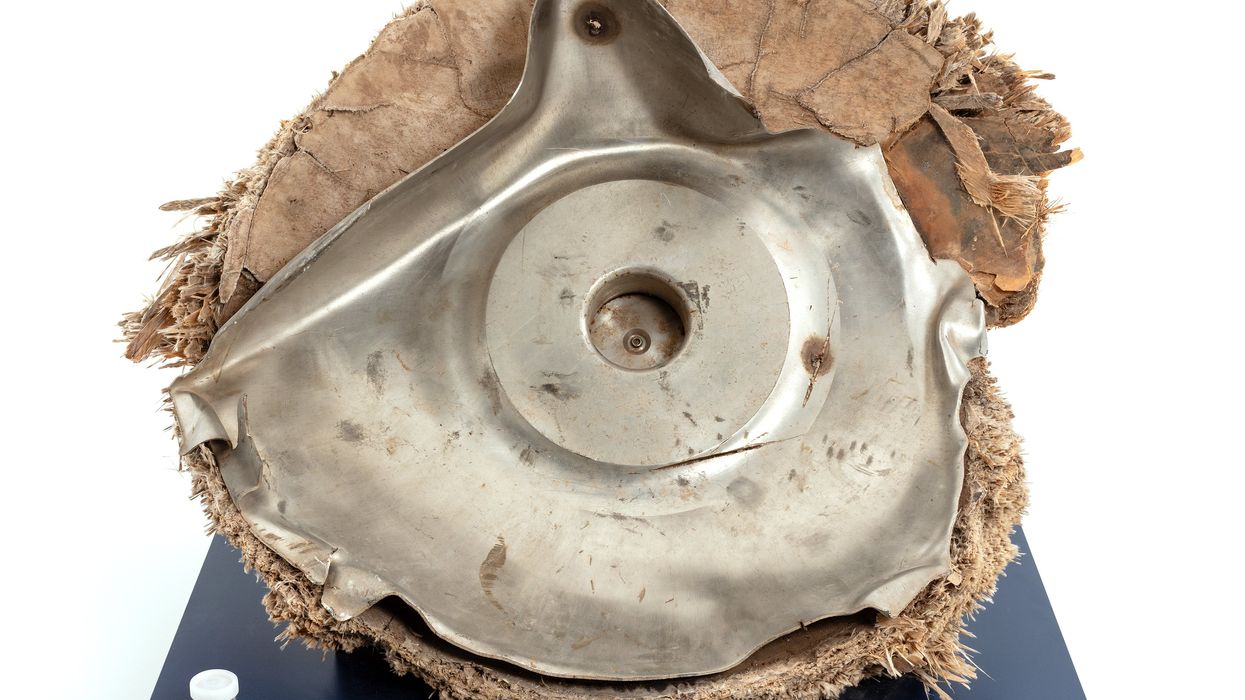
Fifty years ago, on 14 May 1973, a modified Saturn V rocket launched from the Kennedy Space Center carrying Skylab, the United States' first space station. Six years later, in the early hours of 12 July 1979, Skylab reentered Earth's atmosphere in a fiery blaze, spreading debris across the Indian Ocean and Western Australia. More than a decade later, a rancher found this end cap from one of Skylab's oxygen tanks in the dirt. Cattle were drinking collected rainwater from the remains of a US $2.2 billion NASA investment.
Skylab's Failure and RecoverySkylab's fate was sealed moments after lift-off when the sun shield and main solar panel were severely damaged, making it questionable whether the spacecraft could fulfill its multiple planned missions. Without the sun shield, which also protected against small meteoroid damage, the internal temperature of the module would rise to uninhabitable temperatures. The damaged solar panels could not generate enough electricity to power the space station.
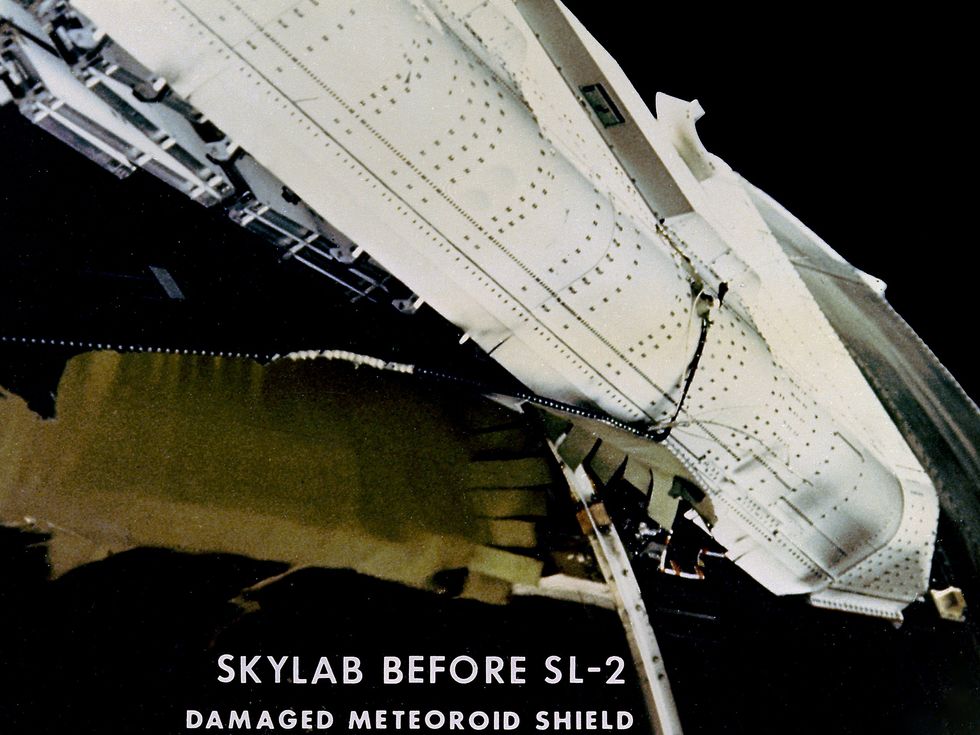 Skylab's sun shield, shown here dangling by a thin strap, was damaged during launch. NASA
Skylab's sun shield, shown here dangling by a thin strap, was damaged during launch. NASA
Skylab launched as a single, two-story unit that combined living quarters with a workshop. It included hundreds of science experiments, a solar observatory, and even a device for taking in-flight showers. The human crew was scheduled to go up a day after the spacecraft. Within hours of the Skylab failure, NASA delayed that crewed mission, as engineers hustled to assess the damage and suggest repairs. The space agency had only a short window of opportunity to salvage the mission. As the cabin overheated, food would begin to spoil, photographic film would be damaged, and materials would begin to break down and off-gas, making the air unbreathable.
NASA engineer Jack Kinzler suggested a solar shield designed like an umbrella that could be deployed through a 20-centimeter-square port hole near the site of the damage and then opened up to provide shade. Once the proof of concept was approved, engineers raced against time to manufacture the device while the Skylab crew began training on how to make the necessary repairs.
Eleven days later, on 25 May 1973, Commander Charles Pete" Conrad Jr., Science Pilot Joseph Kerwin (the first medical doctor in space), and Pilot Paul Weitz finally headed to the space station. After orbiting Skylab in an Apollo Command and Service Module to visualize the damage, Weitz prepared for an EVA, or extravehicular activity. While Kerwin held his legs, Weitz stood through an open hatch and attempted to free the damaged solar array by hooking it with a 3-meter pole. This didn't work. Conrad then attempted to hard dock with Skylab, but the latches wouldn't catch. He tried again and again and again. After eight failed attempts, the crew resorted to the backup emergency docking procedure, which they had practiced only once on Earth. It worked.
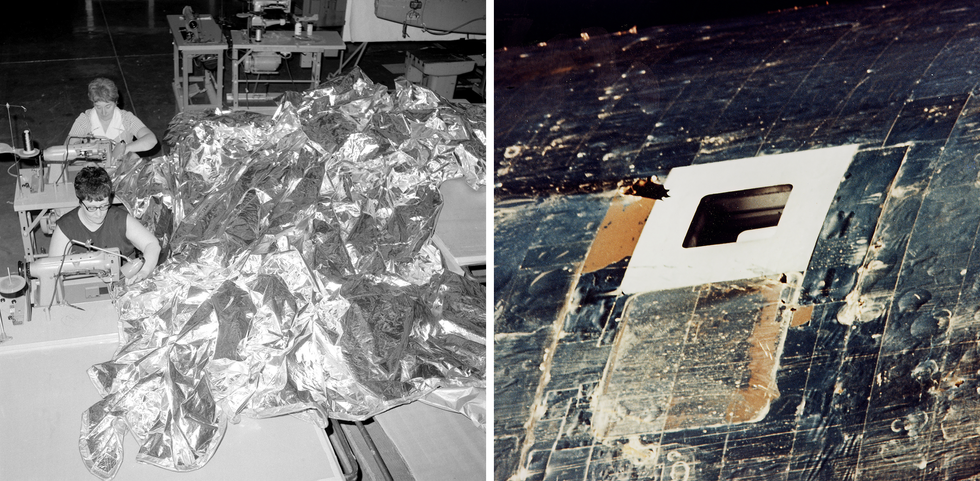 Emergency repairs to Skylab included a replacement solar parasol [left] that was deployed through an airlock [rectangular opening, right].NASA
Emergency repairs to Skylab included a replacement solar parasol [left] that was deployed through an airlock [rectangular opening, right].NASA
They then deployed Kinzler's solar parasol, and within hours the cabin temperature inside Skylab was falling to habitable levels. Two weeks later, Conrad and Kerwin performed a second EVA that removed debris from the main solar array and allowed it to open. Enough power was restored that two more Skylab missions could be completed.
Skylab 3 included Owen Garriott, the first electrical engineer in Space. IEEE Spectrum interviewed him right after his mission and again in 2009. In reading his 1974 interview nearly 50 years removed from the event, I was struck by his description of his role as a scientist/observer of the sun. Running experiments on Skylab, he noted, required decision-making based on interpretation-to, say, select the appropriate instrument settings and optimum mode of operation for a given experiment. It was a nice reminder that there is a subtle art to doing great science.
On 8 February 2019, the 45th anniversary of the return of the last Skylab crew to Earth, the documentary Searching for Skylab: America's Forgotten Triumph premiered at the U.S. Space and Rocket Center in Huntsville, Ala. Directed by Dwight Steven-Boniecki, the film makes extensive use of archival video, punctuated by interviews with astronauts, engineers, and their families. Searching for Skylab focuses on the initial launch and the scramble to save the mission, but it also highlights some of the science experiments conducted while in space.
I found the clips of middle and high school students describing their proposed Skylab experiments to be quite poignant. They were so hopeful and earnest, but the overheated cabinet ruined a handful of the plant-based studies.
Of course, sometimes new opportunities unexpectedly present themselves. The Skylab 3 crew happened to be in place to view-and sketch-Kohoutek, or the Christmas Comet. This was the first time that humans observed a comet from space.
Chicken Little Wasn't Wrong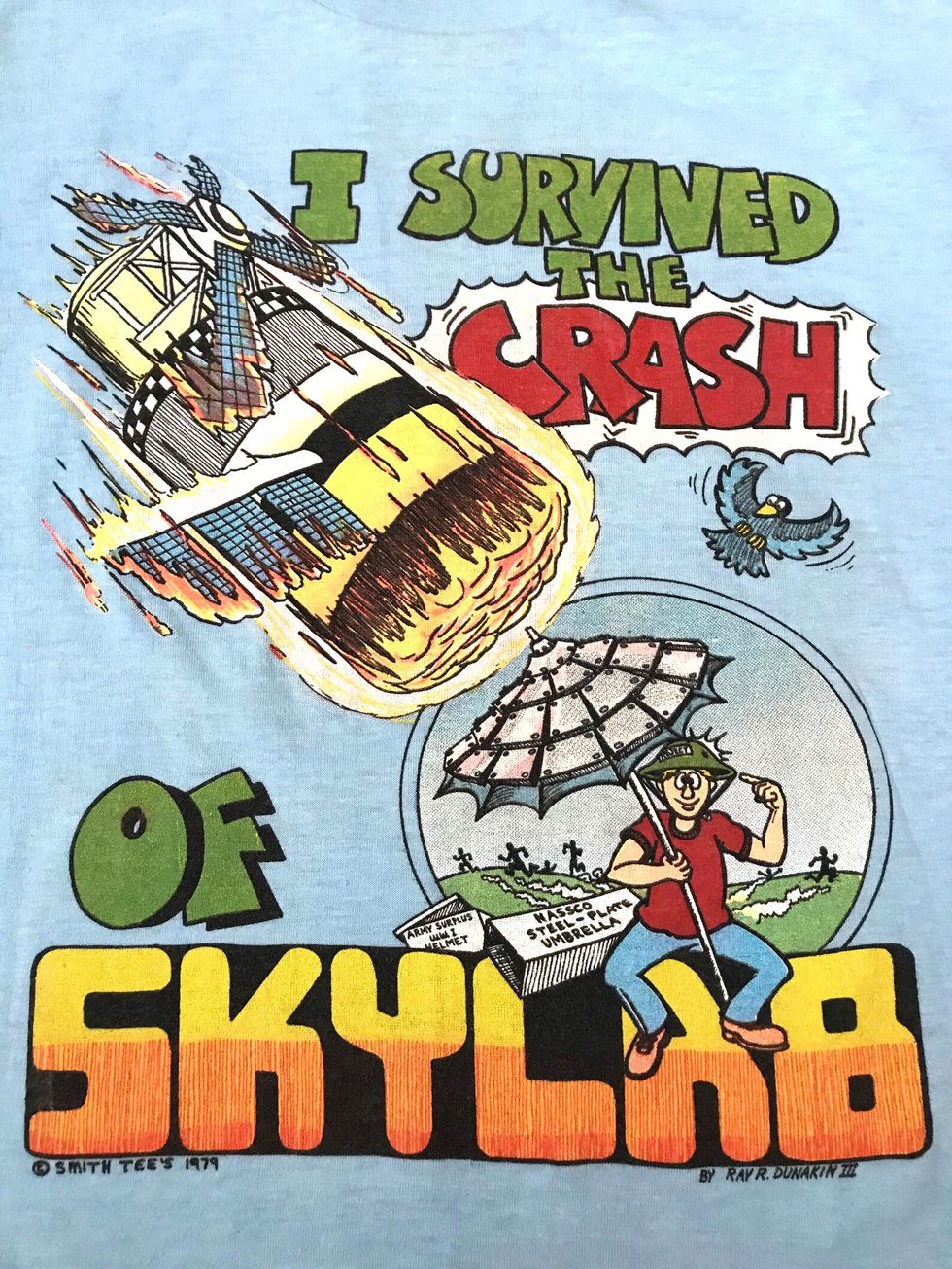 Skylab's reentry in 1979 triggered a wave of memorabilia commemorating the event, including this T-shirt. Ray Dunakin
Skylab's reentry in 1979 triggered a wave of memorabilia commemorating the event, including this T-shirt. Ray Dunakin
In February 1974, when the third Skylab crew powered down the space station and departed, they left with the hope that other astronauts would follow. The damage to the solar panels meant that Skylab's orbit would eventually decay, but NASA's initial calculations had it in space through early 1983. This would provide overlap with the startup of the new space shuttle program and possible efforts to boost Skylab's orbit. As late as 1978, a NASA news release touted the promise of using Skylab as living and working quarters for shuttle missions or a convenient work platform for fabrication and construction of additional structures in space. But the shuttle program was delayed, and unusual solar activity affected Skylab's solar charging. Skylab was not going to make it.
As it became clear that Skylab was going to reenter the Earth's atmosphere, betting on the timing and location of impact became international news. NASA did its best to ensure that pieces of the 76.5-tonne structure didn't crash into densely populated areas, by firing the booster rockets one last time to alter its final path. Although the heaviest fragments of the station fell into the Indian Ocean, debris scattered across the state of Western Australia from the coastal town of Esperance, across the Nullarbor Plain-a flat desert on the Great Australian Bight- to the town of Balladonia.
Early relic hunters scavenged the area for bits of Skylab. The largest pieces ended up in museums, including what's now the Esperance Museum. But the debris field encompassed thousands of square kilometers of a sparsely populated region, and some items took longer to be discovered.
In the early 1990s, a stockman noticed cattle drinking at a place where no water should have been available. He went to investigate and discovered the Skylab fragment pictured at top. It was part of Skylab's large, cylindrical oxygen tanks, which had broken into two pieces on impact. The larger piece found its way to the Esperance Museum, but the smaller piece remained undiscovered until the curious stockman uncovered it. The curved shape formed a shallow dish to collect rainwater, making it perhaps the most expensive water bowl ever.
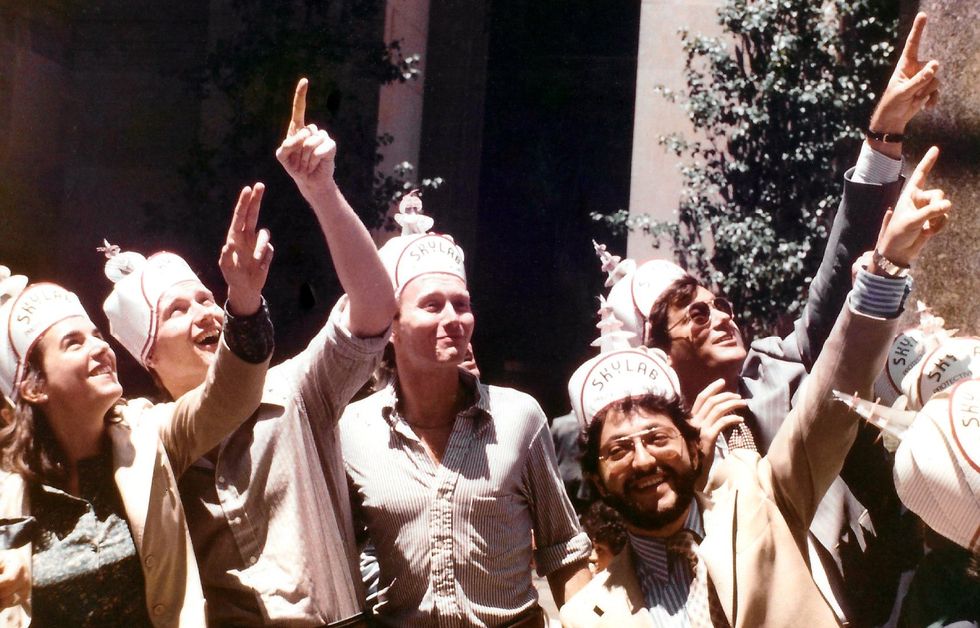 Commemorative objects like the Skylab Protective Helmet help capture the spirit of the times.Jeffrey Hall
Commemorative objects like the Skylab Protective Helmet help capture the spirit of the times.Jeffrey Hall
In the weeks leading up to Skylab's reentry, a cottage industry of commemorative memorabilia emerged. Bob Smith, the owner of a custom silk-screening shop in Lemon Grove, Calif., got in on the action. He asked his art director, Ray Dunakin, to do something wacky with a guy wearing an old helmet and holding a steel umbrella. In an email, Dunakin told me that the resulting T-shirt became one of their most popular designs, selling thousands. Smith convinced a local TV station to send a camera crew and reporter to cover the printing process. The reporter got a human-interest story, and Smith got free advertising.
Although Dunakin had always been interested in space exploration and had followed all of the NASA launches, the Skylab T-shirt was simply a job very early in his career. He had previously done some freelance airbrush art, but working for Smith was Dunakin's first full-time job as a graphic designer. He was shocked when one of the shirts resurfaced more than 40 years later on an online resale site, along with a hefty markup in price.
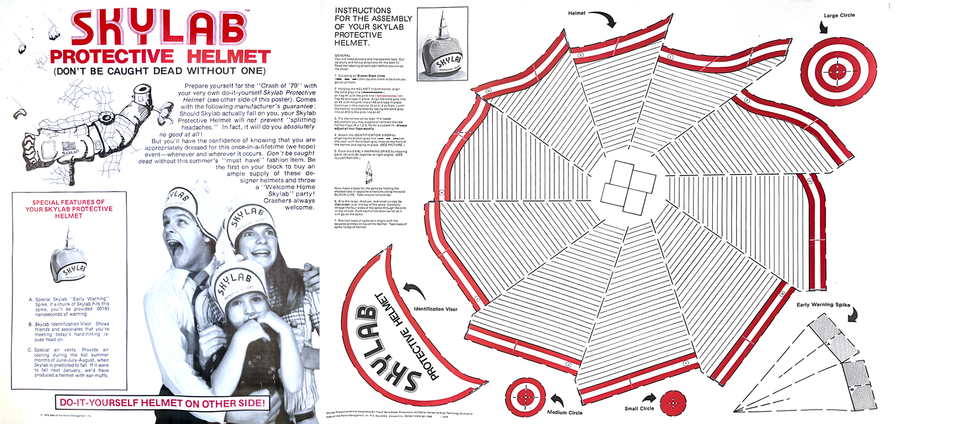 The do-it-yourself Skylab Protective Helmet promised users it would do you absolutely no good at all!" Jeffrey Hall
The do-it-yourself Skylab Protective Helmet promised users it would do you absolutely no good at all!" Jeffrey Hall
Another young man who tried to cash in on the Skylab hoopla was Jeffrey Hall. At the age of 26, he founded Seat-of-the-Pants Management, which specialized in novelty gifts. In honor of Skylab's demise, he manufactured Skylab Protective Helmets. The do-it-yourself paper hats came with the following manufacturer's guarantee: Should Skylab actually fall on you, your Skylab Protective Helmet will not prevent splitting headaches.' In fact, it will do you absolutely no good at all!" Hall took orders for approximately 20,000 of these at $2 apiece, but didn't make a profit. Once Skylab crashed, a number of buyers refused to pay. Hall learned the hard lesson that he should have charged up front.
Commemorative items such as T-shirts and paper hats are often intended to be ephemeral-they exist in the moment to capture the spirit of the time. But sometimes they get stored away in basements, attics, and even museums only to emerge decades later as useful artifacts for historians to study and the public to reflect on a shared past.
Part of a continuing series looking at historical artifacts that embrace the boundless potential of technology.
An abridged version of this article appears in the May 2023 print issue as Skylab's Great Fall."